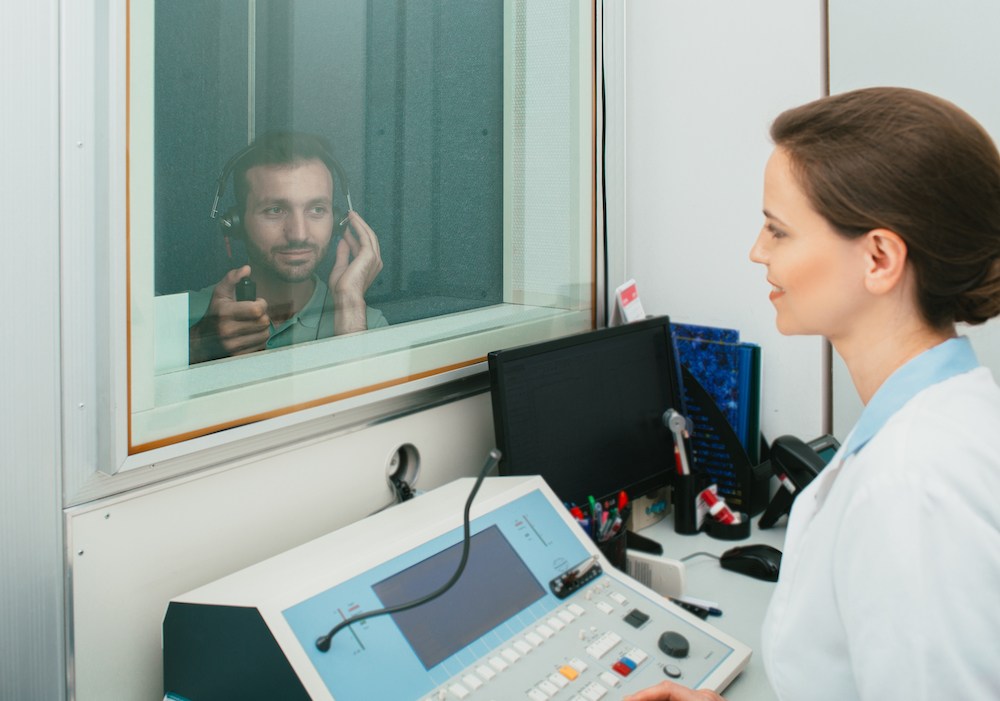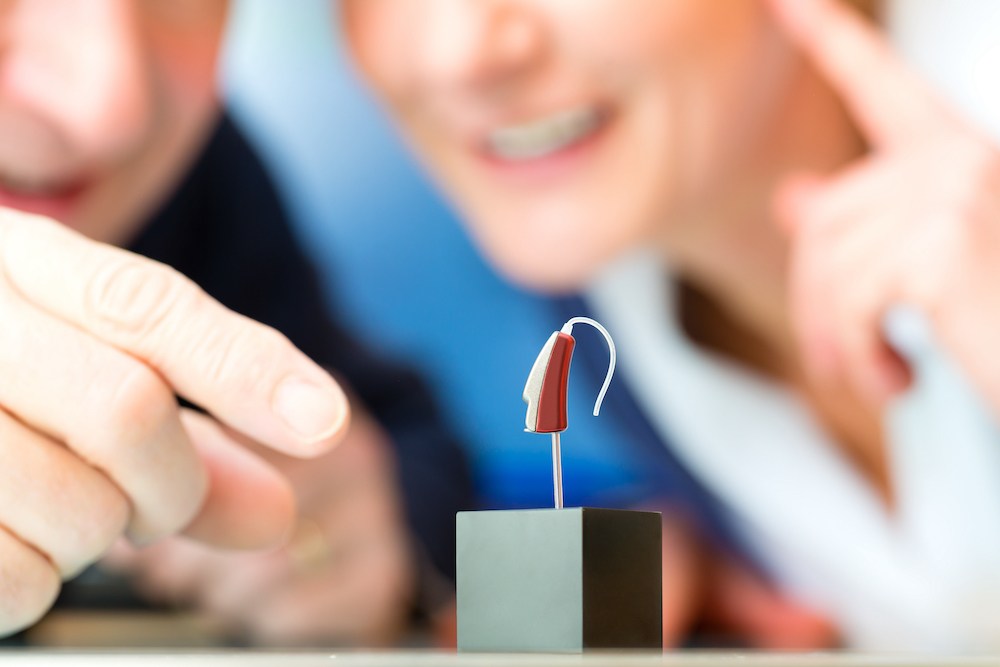The Impact of Hearing Tests on Quality of Life
Your hearing connects you to nearly everything in your daily life, from

By: admin | February 18, 2025
Have you noticed yourself turning up the TV volume lately? Or maybe you’ve found yourself asking people to repeat themselves more often, especially in busy restaurants or family gatherings? These small changes can be the first signs of hearing loss – changes that happen so slowly, you might not notice them right away.
For many of us, hearing loss creeps up gradually. You might find yourself sitting closer to people when they talk or struggling to follow conversations when several people speak at once. Often, it’s family members who notice these changes first – they might mention that you’re missing parts of conversations or that the TV is too loud for their comfort.
The thing about hearing loss is that it affects each person differently. Some people have trouble hearing high-pitched sounds, like children’s voices or birds singing. Others might struggle with background noise, making it hard to enjoy dinner out with friends or participate in group activities.
What makes this tricky is that we often adjust to these changes without realizing it. We might blame poor hearing on other people mumbling or tell ourselves that modern TV shows just have unclear sound. But when hearing becomes more difficult, it can slowly change how we interact with others and enjoy our daily activities.
As we get older, our bodies experience numerous changes, including our hearing. Regular hearing checks become an important part of our healthcare routine, similar to routine eye exams or dental check-ups. These checks are not just about ensuring your enjoyment of life’s sounds but also about protecting your overall health.
Hearing loss is a frequent issue in older adults, often happening so gradually that you might not even notice it at first. Regular appointments with a specialist can help detect any changes early on, providing a wider range of effective treatment options. So, just as you keep up with your eye and dental health, regular hearing tests should be a crucial part of your healthcare routine.
Age-related hearing loss, also known as presbycusis, is a common occurrence for many seniors. This gradual decline is often due to wear and tear on the tiny hair cells in our inner ear that pick up sound waves. These cells don’t regenerate, so once they’re damaged or die off, our ability to hear certain sounds can diminish.
Studies show that about one in three people between the ages of 65 and 74 has some degree of hearing loss. This number increases to nearly half for those over the age of 75. Along with damage to the hair cells in our ears, changes in blood flow to our ears and general wear on the nerves responsible for hearing can contribute to this decline.
However, it’s crucial not to attribute all hearing issues to age alone. Factors like excessive noise exposure over a lifetime or certain medications can also contribute to hearing loss among seniors. So, while aging is indeed linked with some degree of natural auditory decline, it’s not always the sole culprit when you notice changes in your hearing ability.
Recognizing the early signs of hearing loss is vital. These signs can often be subtle and easy to overlook, especially since hearing loss tends to progress gradually.
Firstly, if you find yourself frequently asking people to repeat themselves or if you’re struggling to follow conversations in noisy environments, this could indicate a decrease in your ability to distinguish speech from background noise. Secondly, if you feel that people often seem like they’re mumbling or you have trouble understanding certain high-pitched sounds like the voices of children or women, these could be early indicators of hearing loss.
Pay close attention to your interaction with technology and media. Are you turning up the volume on your TV or radio higher than usual? Do others comment that these devices are too loud when they seem just right for you? If so, this might be another sign that your hearing isn’t quite what it used to be. By staying alert for these signals and seeking advice from an audiologist when they arise, you can stay ahead of any potential issues and ensure optimal auditory health as you age.
Hearing tests come in various forms, each designed to assess specific aspects of your auditory health. Pure-tone testing, for example, measures how well you can hear sounds at different pitches and volumes. Speech audiometry evaluates your ability to understand speech in quiet and noisy environments. Other tests like tympanometry can provide insights into the health of your middle ear by measuring its response to changes in air pressure. Understanding these diverse evaluations will help you better anticipate what a visit to a specialist might entail.
Before your hearing check, it’s helpful to gather some essential information that will make the process smoother and more effective. First, have a clear understanding of your medical history, including any medications you’re currently taking, as some medicines can impact hearing abilities.
Second, consider any specific issues or concerns you’ve been experiencing with your hearing. Are there certain situations where you struggle more than others? Do particular sounds seem muffled or unclear? Noting down these observations can provide valuable insights for the specialist during your test.
Finally, there’s no need to feel anxious about a hearing check. These tests are designed to be comfortable and non-invasive. Your audiologist is there to support you throughout the process and answer any questions you may have. Approach this check with confidence, knowing that it’s an important step towards maintaining your auditory health and overall well-being.
The pure-tone test is a fundamental part of any hearing evaluation and provides valuable information about your hearing capabilities. During this test, you’ll wear headphones and listen to a series of tones at different frequencies and volumes. Your task is to indicate whenever you hear these sounds, regardless of how faint they might be. The results from this test help your specialist understand the quietest sounds you can hear at different pitches. This test is simple and painless, making it an essential step in assessing your hearing health and identifying any changes that may need attention.
Speech audiometry tests play a significant role in the hearing evaluation process, offering a more detailed look at how well you understand speech. They go beyond simply assessing whether you can hear sounds; they evaluate your ability to comprehend words and sentences in different environments.
A typical speech audiometry test involves listening to a series of words or sentences at various volumes, with your task being to repeat what you hear. This allows the specialist to gauge the softest level of speech that you can understand. The test may also include tasks where you listen to speech amidst background noise, simulating real-life scenarios where distinguishing conversation from surrounding sounds is important.
These tests provide valuable insights into how well your ears and brain work together to process spoken language – an essential aspect of communication that we often take for granted. By evaluating your ability not just to hear, but also understand speech, these assessments help ensure that any treatment plan aligns closely with your unique needs.
Bone conduction tests are another essential part of the hearing evaluation process. These unique assessments play a vital role in diagnosing and understanding the type of hearing loss you may be experiencing. Unlike other tests that measure your ability to hear sounds through the air (air conduction), bone conduction tests evaluate how well you can hear sounds transmitted through your bones.
During a bone conduction test, a small device is placed behind your ear on the mastoid bone. This device sends vibrations directly into the inner ear, bypassing the outer and middle ear. By comparing your responses to sounds delivered through air versus those delivered via bone vibration, a specialist can determine whether any hearing loss is due to issues in the outer or middle ear (conductive hearing loss) or in the inner ear (sensorineural hearing loss).
Understanding this difference is vital because it helps guide treatment decisions. For instance, conductive hearing loss might be improved with medication or surgery, while sensorineural hearing loss often benefits from assistive devices like hearing aids. So, when it comes to maintaining optimal auditory health as you age, every test matters – including bone conduction tests.
Tympanometry tests provide valuable information about the condition of your middle ear. These tests work by changing the air pressure in your ear canal and measuring how your eardrum responds to these changes. This process can help identify issues like fluid buildup, eardrum perforations or problems with the Eustachian tube – all factors that could potentially affect your hearing. This test is quick, painless and highly effective in detecting middle ear problems. However, it’s important to note that while tympanometry provides essential insights into middle ear health, it doesn’t directly measure hearing ability or pinpoint specific types of hearing loss. Thus, it is often used in conjunction with other tests for a comprehensive auditory evaluation.
Following your hearing tests, you’ll receive a visual representation of your results known as an audiogram. At first glance, this chart may seem complex, but with some guidance, it becomes much simpler.
An audiogram is a graph that plots the softest sounds you can hear at different pitches or frequencies. The horizontal axis represents frequencies, typically ranging from low (on the left) to high (on the right). On the vertical axis, you’ll find decibels or volume levels, with softer sounds at the top and louder ones towards the bottom.
If you notice marks towards the top of your audiogram, it suggests that you can hear those frequencies at soft volumes – which is good! However, if marks appear lower on the graph, it indicates that those particular sounds need to be louder for you to hear them. Your specialist will review this chart with you in detail and explain what these findings mean for your auditory health. This understanding will help shape any necessary treatment plans and provide a baseline for future hearing evaluations.
Hearing aids are one of the most effective treatments for hearing loss, helping to amplify sounds and improve clarity in everyday conversations. Modern hearing aids come in a variety of styles and technology levels, offering features like noise reduction, directional microphones and Bluetooth connectivity. These advancements make it easier to hear in different environments, whether it’s a quiet conversation at home or a noisy restaurant. Properly fitted hearing aids can significantly enhance a person’s ability to communicate, reducing the strain and frustration that often come with hearing difficulties.
For even greater support, assistive listening devices (ALDs) can be used alongside hearing aids to improve speech clarity in challenging listening situations. ALDs include tools like FM systems, loop systems and personal amplifiers, which help filter out background noise and deliver sound directly to the hearing aids. These devices are especially useful in classrooms, meetings or large public spaces where distance and background noise can make hearing difficult. By combining hearing aids with ALDs, individuals can experience clearer, more focused sound, making daily interactions and social engagement much easier.
Understanding what to expect from hearing tests as a senior is key to approaching them with confidence and ease. These evaluations are not just about detecting hearing loss, but also about preserving your overall health and well-being. Regular check-ups with an audiologist can help detect any changes early on, providing the best chance for effective treatment options. The team at EarTech Audiology is ready to guide you through this process. You can reach our Ogden, Brigham City and Farr West, Utah offices at: (866) 464-1008
Tags: audiogram, speech tests, tympanometry

Your hearing connects you to nearly everything in your daily life, from
By: admin | October 20, 2025

Summer puts your hearing aids through different challenges than the rest
By: admin | July 29, 2025

Many people notice gradual changes in their hearing but don’t think
By: admin | June 20, 2025
